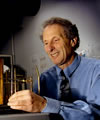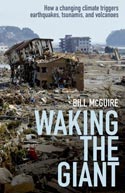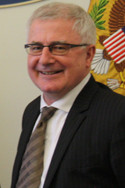In this guest post, first published last week in the Dominion Post, Jim Salinger looks at the long term temperature record for Wellington, and how it has been constructed. Jim’s currently the Lorry Lokey Visiting Professor in the Program in Human Biology at the Woods Institute for the Environment at Stanford University in California.
 Climate scientists want to monitor how climate is changing and global warming progressing. This is particularly pertinent as this week the New Zealand Climate Science Education Trust are currently being heard in the Auckland High Court to try to persuade a judge to invalidate New Zealand’s temperature records which have been compiled and collected by the National Institute of Water and Atmospheric Research and the former government agencies. The coalition asserts the only way NIWA can claim a warming trend of 1°C over the past century is by cooking the books.
Climate scientists want to monitor how climate is changing and global warming progressing. This is particularly pertinent as this week the New Zealand Climate Science Education Trust are currently being heard in the Auckland High Court to try to persuade a judge to invalidate New Zealand’s temperature records which have been compiled and collected by the National Institute of Water and Atmospheric Research and the former government agencies. The coalition asserts the only way NIWA can claim a warming trend of 1°C over the past century is by cooking the books.
This century climate scientists are very interested in tracking climate as human factors are going to be the dominant influence on climate this century, save a meteor crashing in to the planet. They are interested in adjusting the readings as though they are taken from one location in an area. Wellington has one of the longest and best climate records of any region in New Zealand. This is why climate scientists carefully adjust temperature records.
When Sir James Hector, Director of the Colonial Museum in Wellington in the 1860s established a network to monitor New Zealand’s weather and climate, the primary stations were established for weather forecasting, so the priority on permanency of location of a climate monitoring site for climate change was lower. However we are indebted to Sir James’s Scottish heritage as in setting up the network he purchased precision thermometers which were housed in Stevenson screens to ensure consistency. Observations were taken under standard conditions, in his words ‘rigorous….’. This has given us a legacy of climate monitoring under rigorously enforced methods with very reliable observations from the 19th century, the envy of many countries.
Continue reading “Warming in Wellington”
Like this:
Like Loading...
 I have been listening to a lecture by Victoria University climate scientist, James Renwick, who has recently moved to the university from his post as principal climate scientist at NIWA. In the seminar he sets out in broad terms some of the latest developments in the science. It’s a very clear summation, with some recent interesting graphs and charts, showing the direction which in which climate change is continuing to move. Needless to say there’s no change in direction apparent. I recommend the lecture as well worth listening to. I’ll only touch lightly in this post on the scientific content of the lecture; my main purpose is to highlight comments Renwick made along the way indicating the concern he feels about where we are headed.
I have been listening to a lecture by Victoria University climate scientist, James Renwick, who has recently moved to the university from his post as principal climate scientist at NIWA. In the seminar he sets out in broad terms some of the latest developments in the science. It’s a very clear summation, with some recent interesting graphs and charts, showing the direction which in which climate change is continuing to move. Needless to say there’s no change in direction apparent. I recommend the lecture as well worth listening to. I’ll only touch lightly in this post on the scientific content of the lecture; my main purpose is to highlight comments Renwick made along the way indicating the concern he feels about where we are headed.
 Climate scientists want to monitor how climate is changing and global warming progressing. This is particularly pertinent as this week the New Zealand Climate Science Education Trust are currently being heard in the Auckland High Court to try to persuade a judge to invalidate New Zealand’s temperature records which have been compiled and collected by the National Institute of Water and Atmospheric Research and the former government agencies. The coalition asserts the only way NIWA can claim a warming trend of 1°C over the past century is by cooking the books.
Climate scientists want to monitor how climate is changing and global warming progressing. This is particularly pertinent as this week the New Zealand Climate Science Education Trust are currently being heard in the Auckland High Court to try to persuade a judge to invalidate New Zealand’s temperature records which have been compiled and collected by the National Institute of Water and Atmospheric Research and the former government agencies. The coalition asserts the only way NIWA can claim a warming trend of 1°C over the past century is by cooking the books.  It’s only if we fail to grasp the enormity of the threatened impacts of climate change on the global environment that we can scoff at the notion that even volcanic eruptions and earthquakes may be triggered as a consequence of our continuing to burn fossil fuels. Not that it’s an easy consequence to appreciate, but vulcanologist
It’s only if we fail to grasp the enormity of the threatened impacts of climate change on the global environment that we can scoff at the notion that even volcanic eruptions and earthquakes may be triggered as a consequence of our continuing to burn fossil fuels. Not that it’s an easy consequence to appreciate, but vulcanologist  I listened to Climate Change Minister Tim Groser being questioned about the ETS on
I listened to Climate Change Minister Tim Groser being questioned about the ETS on